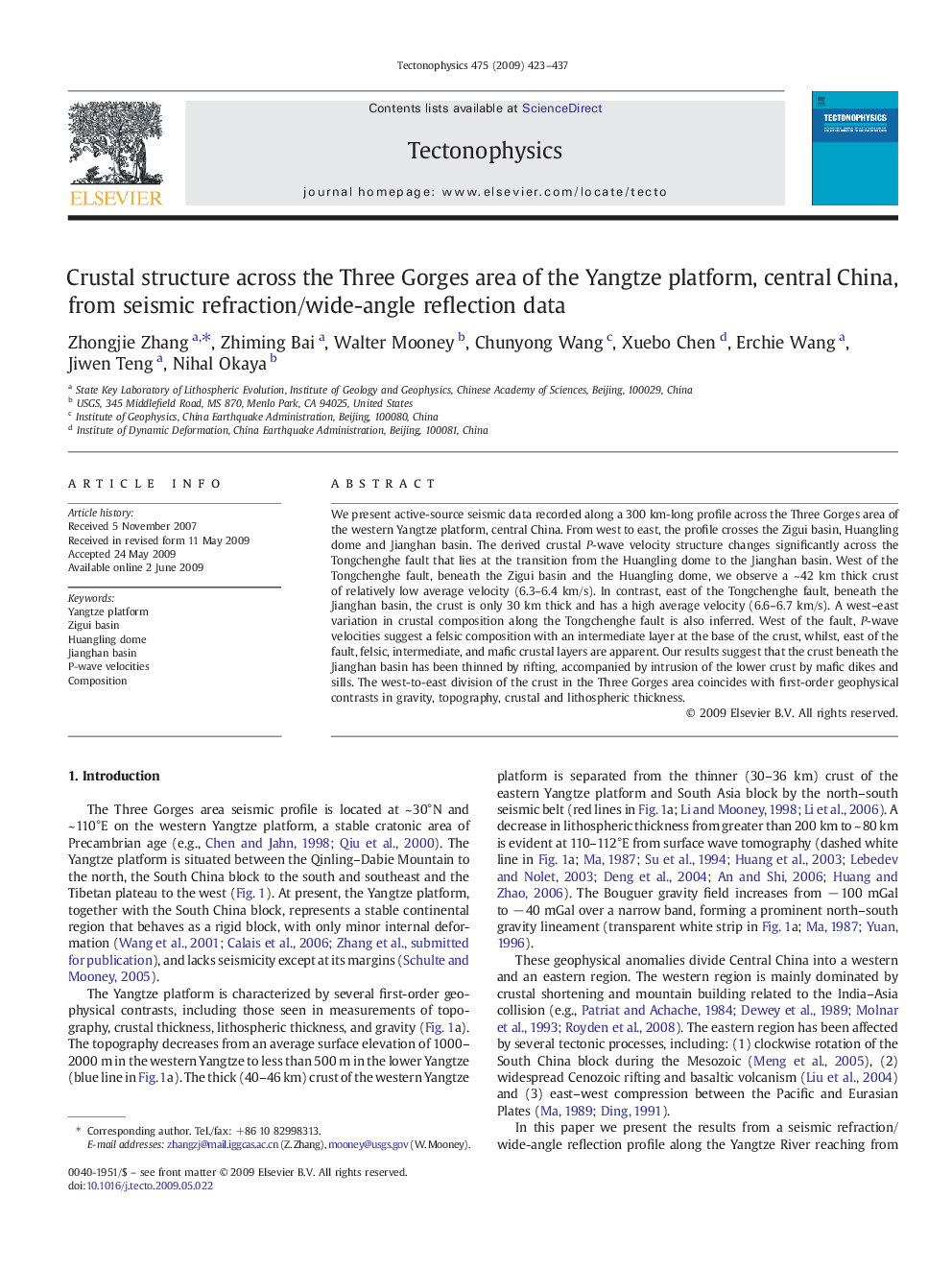| Article ID | Journal | Published Year | Pages | File Type |
|---|---|---|---|---|
| 4693765 | Tectonophysics | 2009 | 15 Pages |
We present active-source seismic data recorded along a 300 km-long profile across the Three Gorges area of the western Yangtze platform, central China. From west to east, the profile crosses the Zigui basin, Huangling dome and Jianghan basin. The derived crustal P-wave velocity structure changes significantly across the Tongchenghe fault that lies at the transition from the Huangling dome to the Jianghan basin. West of the Tongchenghe fault, beneath the Zigui basin and the Huangling dome, we observe a ~ 42 km thick crust of relatively low average velocity (6.3–6.4 km/s). In contrast, east of the Tongchenghe fault, beneath the Jianghan basin, the crust is only 30 km thick and has a high average velocity (6.6–6.7 km/s). A west–east variation in crustal composition along the Tongchenghe fault is also inferred. West of the fault, P-wave velocities suggest a felsic composition with an intermediate layer at the base of the crust, whilst, east of the fault, felsic, intermediate, and mafic crustal layers are apparent. Our results suggest that the crust beneath the Jianghan basin has been thinned by rifting, accompanied by intrusion of the lower crust by mafic dikes and sills. The west-to-east division of the crust in the Three Gorges area coincides with first-order geophysical contrasts in gravity, topography, crustal and lithospheric thickness.
